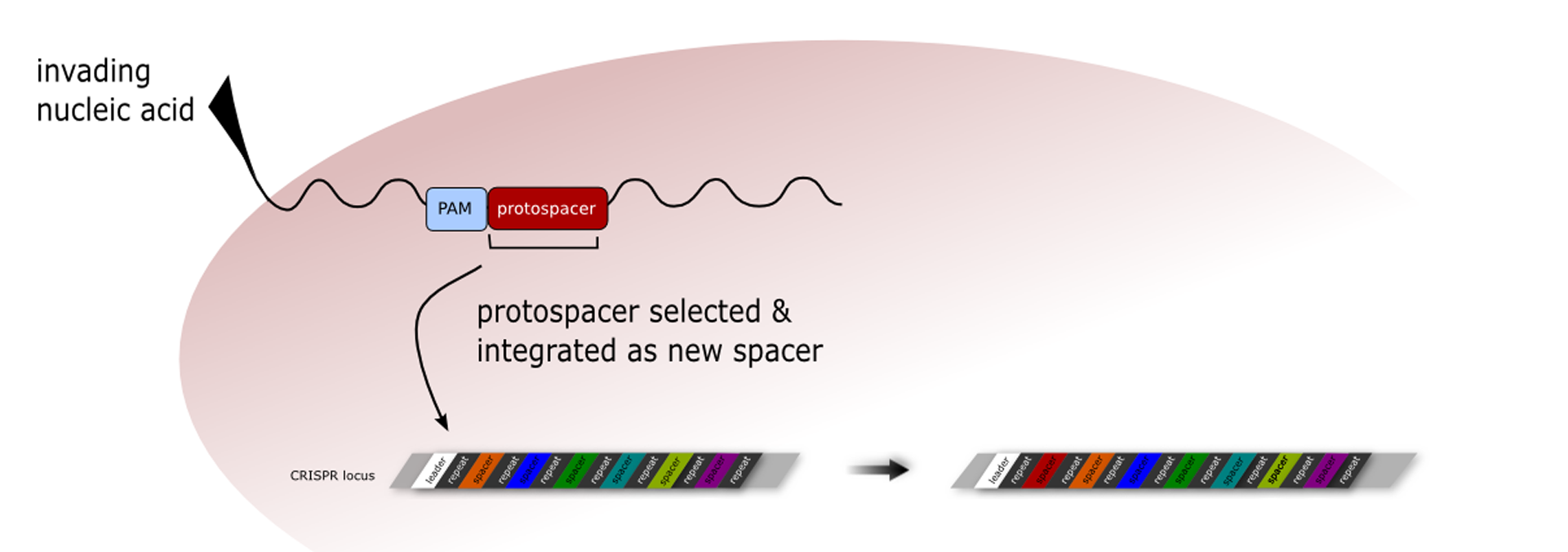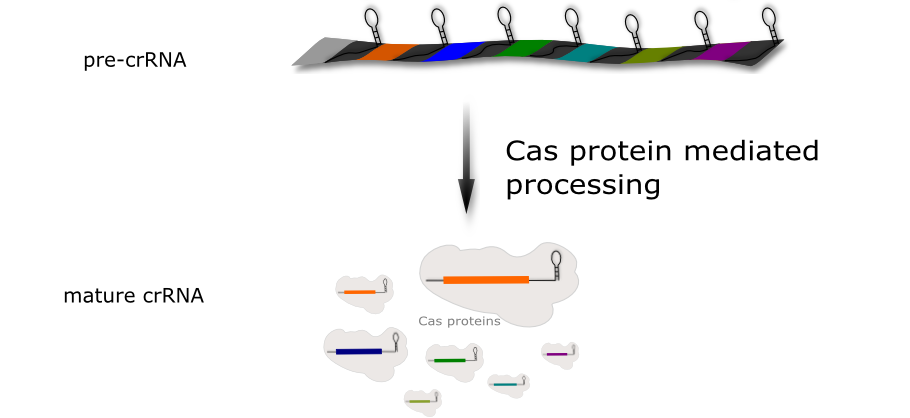The CRISPR-Cas system: an introduction
The key players of the prokaryotic immune system CRISPR-Cas are the CRISPR RNA (CRISPR is short for clustered regularly interspaced short palindromic repeats) and the Cas proteins (Cas stands for CRISPR associated). The Cas proteins show a remarkable degree of diversity: at least 65 distinct sets of orthologous proteins have been identified, that can be classified into 23-45 families (depending on the classification criteria). Only two Cas proteins are universally conserved in all CRISPR-Cas systems: Cas1 and Cas2.

Figure 1. The CRISPR locus. The CRISPR locus consists of repeat and spacer sequences, the latter are derived from the invader. After an invader attack is detected, the DNA is degraded and a piece of the invader DNA is integrated into the CRISPR locus.
The CRISPR RNA consists of repeat sequences that are separated by short spacer sequences, which are derived from the invader (Figure 1). The defence reaction progresses in three steps: (1) adaptation, (2) CRISPR RNA expression and (3) interference. The first step is crucial for the cell, here it encounters the invader for the first time and has to notice the attack right away to detect and degrade the invader DNA and to insert a piece of the invader DNA into the CRISPR locus (Figure 2). The invader DNA fragments are usually inserted at the 5´ end of the CRISPR locus. Thus, this locus serves as a memory for previous invasions and also as a timeline where the older invasions are recorded at the 3´ end and the recent ones can be seen at the 5´ end. Storage of the invader DNA in the CRISPR locus makes the cell immune against a repeated attack of the invader.

Figure 2. The adaptation step. An invader attacks the cell for the first time, it is immediately recognised as foreign and degraded. A piece of the invader DNA is then integrated into the CRISPR locus.
In the second step of the defence, the CRISPR locus is transcribed into a long precursor RNA that is subsequently cleaved to generate the mature crRNAs (approx. 20-40 nucleotides long) (Figure 3). Each crRNA contains the sequence information of one invader.

Figure 3. Expression of the CRISPR locus. The CRISPR locus is transcribed into a long precursor RNA that is subsequently processed by Cas proteins to mature crRNAs. The crRNAs are then bound by Cas proteins.
If an invader repeatedly attacks the cell, which has a crRNA specific for this invader, the invader can be immediately detected by the crRNA (through base pairing) and the invader is degraded by Cas proteins (Figure 4).

Figure 4. The interference step. Upon a repeated attack of an invader the invader specific crRNA detects the invader by perfect base pairing with its DNA, thereby triggering the degradation of the invader DNA.
Contact
Coordinator:
Prof. Dr. Anita Marchfelder
Biology II
Ulm University
89069 Ulm
Phone: +49 - 731-50-22658
Fax: +49 - 731-50-12-22658
anita.marchfelder(at)uni-ulm.de
Secretary:
Annemarie Windeck
Phone: +49 - 731-50-23931
Fax: +49 - 731-50-23932
annemarie.windeck(at)uni-ulm.de
